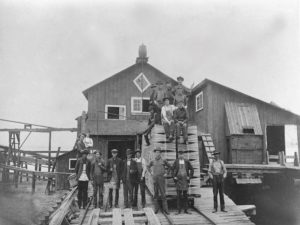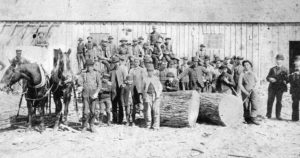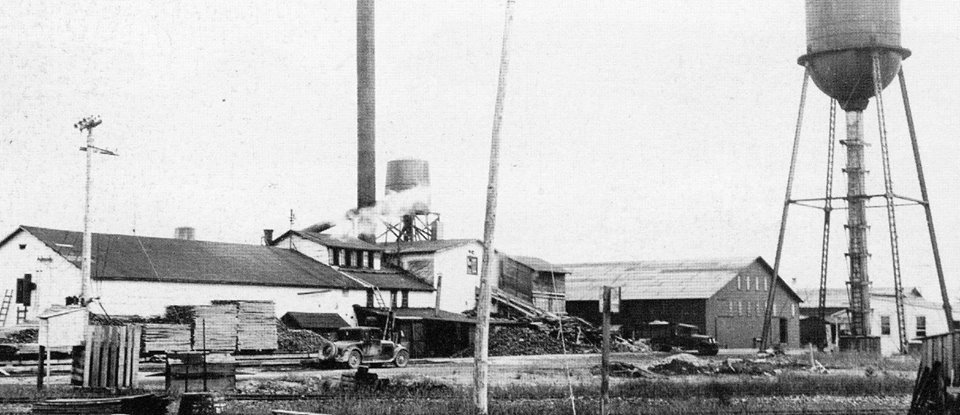
White Marble Lime Company shingle mill workers
In April of 1920, the vast majority of men employed in the timber industry in Manistique were required to work ten hours per day, six days per week. The International Timberworkers Union District No. 2, headquartered in Rhinelander, Wisconsin, warned industry executives of a strike by its members if certain demands were not met. These included: an eight hour work day; minimum wage of $100.00 per month; board for men in the woods; no overtime, Sunday or holiday work; a wage of $5.00 per day for men driving logs on the rivers; pay dates twice per month; abolition of contracts, piece work and bonus systems; and recognition of the union.
In an effort to avert a strike, some employers offered modest wage increases, but almost all held firm to the ten hour work day. Consolidated Lumber Company in Manistique granted a wage increase of fifty cents per day plus a bonus plan based on production. The Manistique Handle Factory gave their employees a modest twenty-five cent per day increase.
The strike began on May 3, 1920 and affected nearly 65,000 workers in Northern Minnesota, Wisconsin and Upper Michigan. In Manistique, 11 plants were closed which normally employed over 900 men. The Manistique Cooperage Company produced the round tops for wooden kegs and employed 25 men. The company headquarters was based in Cleveland, Ohio and its main business was the manufacture of nails. Since the production of kegs was deemed essential to business, the plant manager in Manistique was instructed to keep the mill open at all costs. In short order the Manistique Cooperage was converted to an eight hour work schedule. The Manistique Lumber Company had already been operating on an eight hour day and the Ekstrom Lumber Company which employed 6 to 8 men in its retail yard, acceded to the union demands and was placed on an 8 hour work day.

The Manistique Cooperage Company
In contrast, Manistique’s largest employers including the Consolidated Lumber Company and the White Marble Lime Company ceased timber operations completely. After being closed for a week, some union men at the Manistique Handle Factory returned to work. Company spokesmen reported that the plant resumed production with 50 men on the job, but no yard work was being completed. The union disputed this claim stating that the handle factory had a crew of only three men and “all they do is blow the whistle three times a day.” It was later reported that the factory was operating with a skeleton crew of 18 men.

Employees at the Handle Factory in Manistique
As the strike dragged on through May and June of 1920, union support for the strike in Manistique continued to be strong. For the most part the strike was peaceful. One notable exception took place on June 3, 1920 when women on the picket line threw hot water on three men who crossed the line on their way into work. Fortunately, the men did not receive serious burns. Nevertheless, the incident resulted in a restraining order being issued by the circuit court judge that prohibited picketing at some of the plants.
Newspapers continued to report that the strongest support for the strike in the Upper Peninsula was in Menominee, Munising and Manistique. Though workers in Manistique held firm to their demand for an eight hour work day, the prolonged strike resulted in severe economic hardship for many families. Some workers were able to find temporary employment elsewhere. However, as more and more local unions in other cities voted to return to work, the strike appeared doomed to failure. By mid-July the International Timberworkers Union ordered its remaining men on strike to return to work under conditions that existed prior to the strike.

The Consolidated Lumber Company
